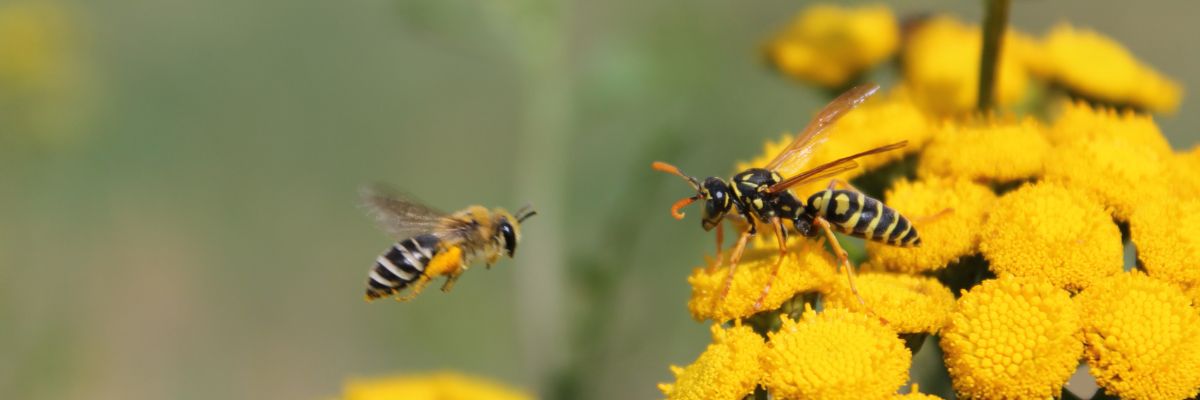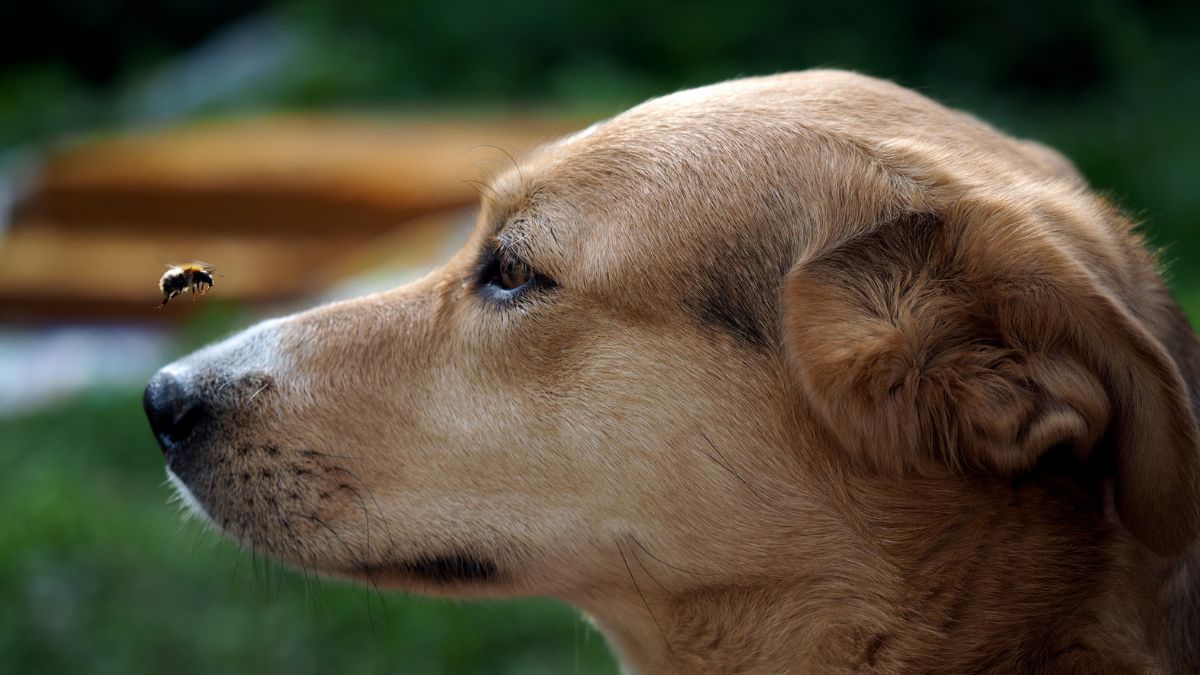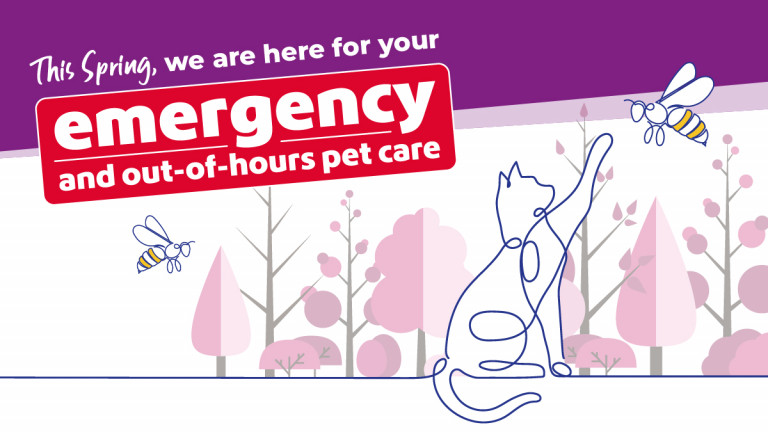
Understanding bee & wasp stings in dogs
Wasp and bee stings are common in dogs, particularly in spring, summer, and early autumn. Curious dogs often get stung while exploring, stepping on a bee, or snapping at a wasp.
In some cases, stings are just mildly irritating, but they can also trigger severe allergic reactions, including anaphylactic shock, which can be life-threatening. Multiple stings further increase the risk of serious complications.
Key facts to know about bee and wasp stings:
- Bees leave a stinger behind, while wasps do not.
- Multiple stings can be dangerous, especially in small dogs.
- Stings inside the mouth or throat are serious as swelling can block airways.
- If your dog gets stung, it’s important to know when home treatment is enough and when to seek emergency care.
When to seek veterinary care
If your dog has suffered a sting in the mouth, throat, or tongue or has been stung multiple times, you should contact your vet or an emergency clinic immediately.
Additionally, seek help if your dog shows signs of an allergic reaction, which may include:
- Significant facial swelling
- Difficulty breathing or wheezing
- Collapse, seizures, or disorientation
Timing is crucial as most allergic reactions occur within 10 minutes, but they can also be delayed for hours. In some cases, delayed anaphylaxis in dogs can occur much later, making it essential to stay vigilant. Learn more about delayed anaphylaxis in dogs here.
If your dog has experienced a severe reaction, it is important to monitor them for at least 72 hours.
Step-by-step: How to treat a bee or wasp sting at home
✔ Restrain Your Dog Safely
Your dog may be in pain and react aggressively when touched. Have an assistant help if needed.
✔ Remove the Stinger (If a Bee Sting)
Use a credit card or similar object to gently scrape below the venom sac to prevent further venom release. Do NOT use tweezers or nails, as they can squeeze more venom into the wound. Wasps do not leave stingers behind, so this step only applies to bee stings.
✔ Soothe
Soothe the area around the bite by bathing it in cool water.
✔ Neutralize the Venom
For bee stings (acidic): Apply bicarbonate of soda. For wasp stings (alkaline): Apply vinegar.
✔ Apply a Cold Compress
Use an ice pack wrapped in a clean tea towel or a bag of frozen vegetables for 10 minutes. This helps reduce swelling and pain.
✔ Monitor for Reactions
Check for swelling, hives, or signs of discomfort. Keep an eye out for delayed allergic reactions over the next few hours.
✔ Do Not Give Medications Without a Vet’s Advice
Only give antihistamines if specifically instructed by a vet. Some human medications can be toxic to dogs.
 Embed this infographic on your site. Click the embed button and copy and paste the code onto your site to show the infographic.
Embed this infographic on your site. Click the embed button and copy and paste the code onto your site to show the infographic. Symptoms to watch for after a sting
Mild symptoms (usually manageable at home):
- Pawing, licking, or biting the affected area
- Localized swelling
- Whining, agitation, or drooling
Moderate symptoms (monitor closely & contact a vet if worsening):
- Hives (lumpy skin texture)
- Swelling of the face, lips, or eyes
- Limping (if stung on a paw)
Severe reactions (seek emergency care immediately):
- Pale gums, weakness, or lethargy
- Difficulty breathing or wheezing
- Collapse, seizures, or disorientation

Preventing bee & wasp stings in dogs
Reduce exposure to stinging insects:
- Keep your dog away from flowering plants, beehives, and wasp nests.
- Be extra cautious when outdoors during peak sting season (spring to autumn).
Protect sensitive areas like paws:
- Dogs often step on bees or wasps, causing stings on the paw pads.
- Check for limping or excessive licking of a paw, as this can indicate a sting.
For dogs with a history of allergic reactions, talk to your vet about an emergency treatment plan.
Most bee and wasp stings are not serious but knowing how to treat them correctly and quickly can prevent complications. Always monitor your dog closely after a sting, and if in doubt, seek veterinary advice – especially if your dog shows signs of an allergic reaction.
By taking quick action and knowing when to seek emergency care, you can keep your dog safe and comfortable after a bee or wasp sting.
If you have any concerns, contact your vet, or if out of hours, contact your nearest Vets Now emergency clinic.
Visit our Spring hub
As the days get longer and nature bursts back into life, spring is the perfect time to enjoy more adventures with your pet.
But with seasonal hazards such as bee stings, and toxic flowers - it’s so important to stay prepared.
Explore our hub to learn about possible hazards and how to keep your pet safe and healthy.


